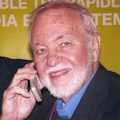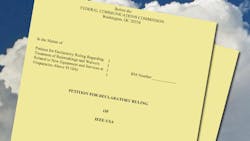This file type includes high resolution graphics and schematics.
The IEEE-USA has positioned the Federal Communications Commission (FCC) to declare the spectrum above 95 GHz as “a new technology or service.” Such a ruling would foster more rapid capital investment in research and development that would lead to new commercial wireless equipment and services.
Broadband wireless and the ever-expanding demand of cellular LTE and other services have been eating up all existing spectrum below 3 GHz, creating a serious spectrum shortage. Spectrum auctions, mergers and acquisitions, and spectrum trading help, but the demand for more space continues.
One solution is to keep moving higher in frequency. This means pushing development of the millimeter-wave bands above 30 GHz. Some radar, satellites, and backhaul services already use segments of this spectrum. The newest IEEE 802.11ad wireless local-area network (WLAN) standard uses the 60-GHz band. And, some research continues on the higher frequencies.
A formal statement from the FCC would clear up any hesitancy on the part of venture capitalists and other investors to invest without regulatory uncertainty in the new technologies that would make this spectrum more practical and useful.
A similar FCC declaration 28 years ago led to the development of the 802.11 standards and the Wi-Fi technology that we all use. A comparable statement by the FCC would quickly lead to faster development of components and products that would make the 95-GHz spectrum a new frontier of commercial business.
With such a declaration, companies could move ahead and develop the technology with minimal risk, a major factor in pursuing any new technology investment. Other countries are already working in this frequency range, so the U.S. needs to take action fast and get in on the potential that this spectrum opens up.
To see the IEEE-USA petition, www.ieeeusa.org/policy/documents/FCCPetitionJuly2013.pdf
This file type includes high resolution graphics and schematics.
About the Author

Lou Frenzel
Technical Contributing Editor
Lou Frenzel is a Contributing Technology Editor for Electronic Design Magazine where he writes articles and the blog Communique and other online material on the wireless, networking, and communications sectors. Lou interviews executives and engineers, attends conferences, and researches multiple areas. Lou has been writing in some capacity for ED since 2000.
Lou has 25+ years experience in the electronics industry as an engineer and manager. He has held VP level positions with Heathkit, McGraw Hill, and has 9 years of college teaching experience. Lou holds a bachelor’s degree from the University of Houston and a master’s degree from the University of Maryland. He is author of 28 books on computer and electronic subjects and lives in Bulverde, TX with his wife Joan. His website is www.loufrenzel.com.

